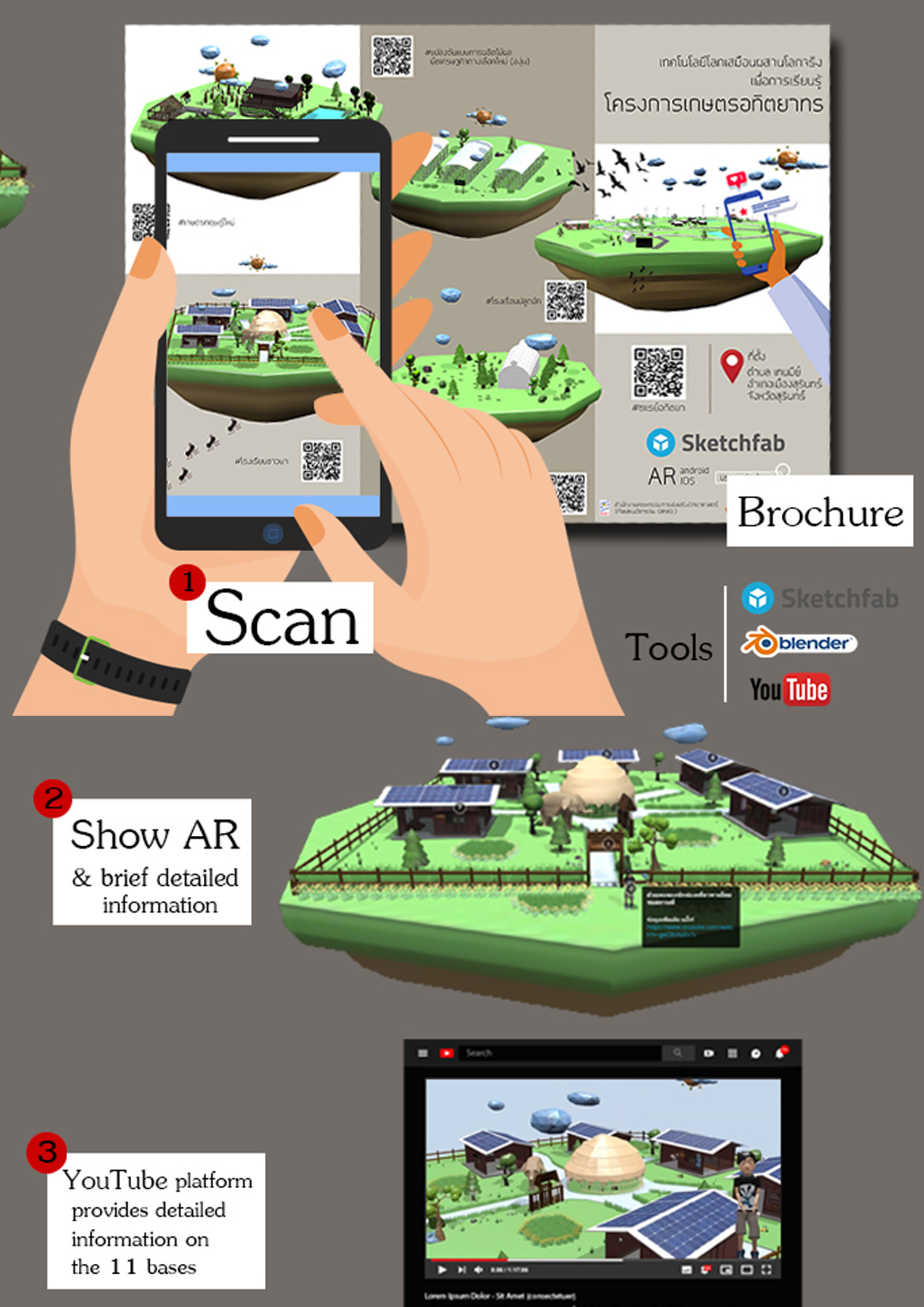Applying Augmented Reality to Represent the New Theory of Agriculture “Sa-rae Athitaya”
Keywords:
Kasetaditaya, Augmented reality, Surin Agricultural ProjectAbstract
This research aims to develop Augmented Reality (AR) to represent information regarding the Agricultural Project for Aditayathorn Rice Field and evaluate the user satisfaction towards the AR application. The research participants are those people who travel to the agricultural project site where a sample group of 400 people is selected using convenience sampling. The research tools are based on AR and statistical evaluation techniques. The research data was collected from July to August 2020 and analysed using mean and standard deviations. The results showed that AR was capable of representing information about the project in eleven 3D models. The models can be represented and accessed through different applications (i.e., Android, iOS, and web browser) with background music. The project information can be displayed in the form of text on 3D scenes, which can be performed through cartoons and 3D animations with music and sound effects. The survey results also indicated that the participants were able to learn information of the project more conveniently and quickly. The participants also rated the project with high scores in terms of novelty in learning and interesting information representation.
References
[2] The Franklin Institute, What is augmented reality, [Online] retrieved: June 2020, URL: https://www.fi.edu/what-is-augmented-reality
[3] Sketchfab, About Sketchfab, [Online] retrieved: June 2020, URL: https://sketchfab.com/about
[4] Blender, About, [Online] retrieved: June 2020, URL: https://www.blender.org/
[5] Blender, Introduction, [Online] retrieved: June 2020, URL: https://docs.blender.org/manual/ en/latest/ getting_started/about/introduction.html
[6] Cochran, W.G. (1953). Sampling Techiques. New York : John Wiley & Sons. Inc.
[7] Kongkoon Tochaiwat (2017). writing a research proposal of Easily Do 1st edition. Bangkok: Chulalongkorn University Press.
[8] Koch, W. R. (1983). Likert scaling uring the grade response latent trait model. Applied Educational Psycholgical,7(1),15-32.
[9] Nitisak Charoenruop (2017). Applying Augmented Reality to present tourist information: a case study of Wat Phra Kaew, Chiang Rai Province, Journal of Modern Management Science, 10 (1), 13-30.
[10] Suwichai Phansa (2018), Development of augmented reality media for creative learning, Mae Mai Art of Muay Thai, Journal of Information Technology and Innovation Management, 5 (2), 146-154.
[11] Jitanan Sricharoen, Duangchan Siharaj and Anupong Sukprasert (2019) Application of tourism promotion, 8 must-visit attractions in Phetchabun Province with Augmented Reality technology, Journal of Computer Science, and Information Technology Project, 5 (1), 84-94.
[12] Anong Saetae (2016). The use of animation media and graphic reviews in teaching and learning to develop the achievement in Energy and Environment in Plant Structure and Composition at the second year of Vocational Diploma in Tourism and Hospitality, Phayab Technology and Business Administration College, Bachelor of Science Faculty of Biology and Graduate Studies, Payap College of Technology and Business Administration.
[13] Apiwadee Jitkasemphuree, Pitsaprapai Sarasalin and Chaiporn Panichruttiwong (2019), Augmented Reality technology for the exhibition encouragement of Thai wares, National Academic Conference Rangsit University.Bangkok: Rangsit University.
[14] Potsirin Limpinan. (2019), Promotion of tourist attractions in Maha Sarakham Province using Augmented Reality technology, Journal of Information Technology Management, and Innovation, 6 (1), 8-16.









